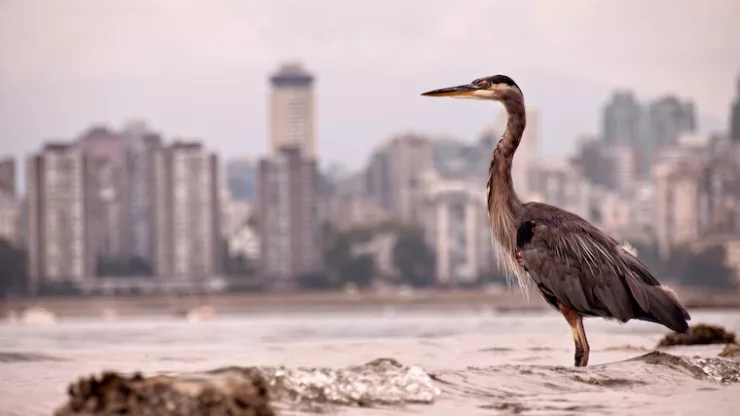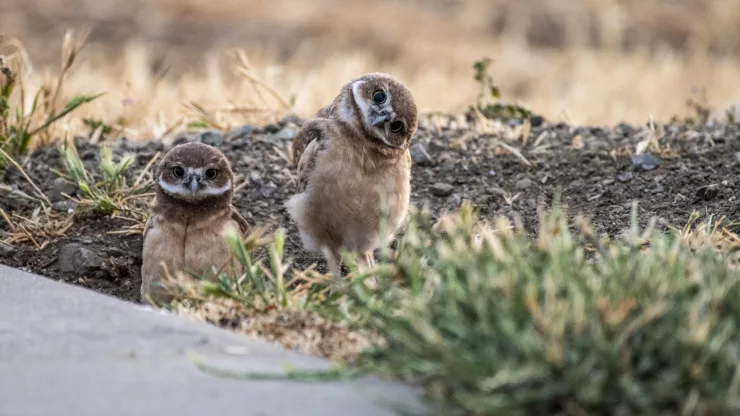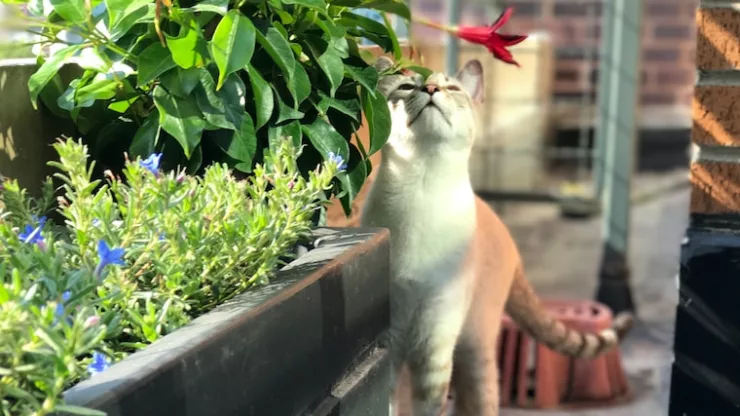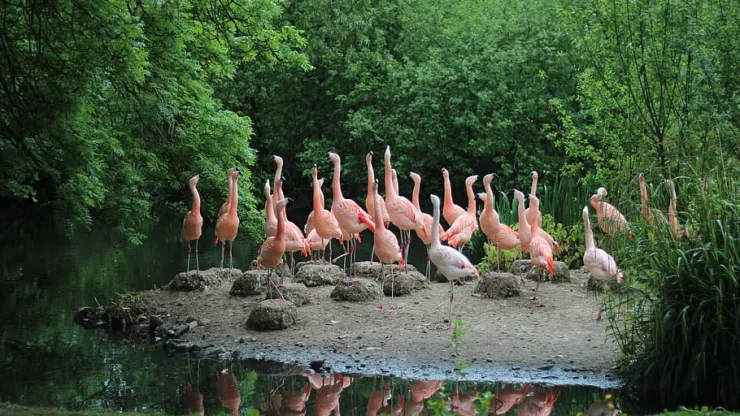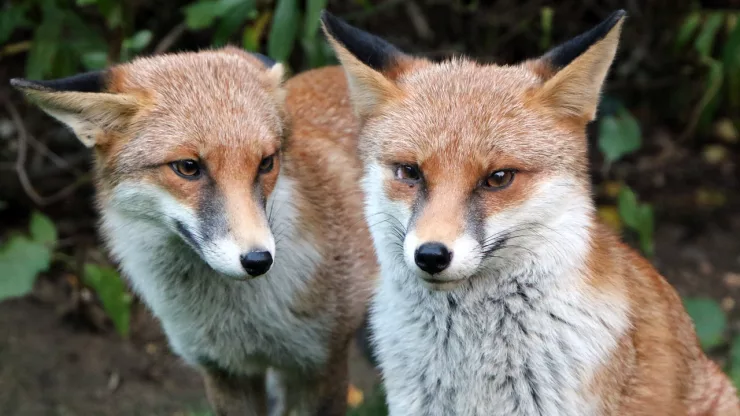The rapid growth of urbanization has led to the loss of natural habitats and ecosystems worldwide.
However, even in urban areas, wildlife can thrive and adapt to their surroundings in unexpected ways.
From birds and insects to larger mammals like raccoons and coyotes, urban wildlife has proven to be resilient and adaptable.
As we continue to expand our cities, it’s important to understand the fascinating dynamics of wildlife in cities and how we can build harmonious habitats for them.
Jump to Section
Thriving Ecosystems in Cities
Despite the challenges of urbanization, cities can actually provide rich and diverse ecosystems for plants and animals.
In fact, cities can support more species than surrounding rural areas.
For example, the city of Berlin, Germany has over 20,000 species of plants and animals, including many rare and endangered species.
This is due in part to the variety of habitats available in cities, from parks and green spaces to abandoned buildings and industrial sites.
Additionally, the warmer microclimates created by urban heat islands can provide a hospitable environment for certain species.
Urbanization and Its Impact on Wildlife
While cities can provide habitats for wildlife, the process of urbanization can also have negative impacts on their populations.
The loss of natural habitats, fragmentation of ecosystems, pollution, and the introduction of non-native species can all threaten the survival of urban wildlife.
Additionally, urban areas can pose physical dangers to animals, such as collisions with vehicles or encounters with domestic pets.
These factors can have cascading effects on ecosystems, potentially leading to declines in biodiversity and loss of ecosystem services.
The Fascinating Adaptation of Urban Wildlife
Despite the challenges, urban wildlife has shown a remarkable ability to adapt to their surroundings.
Some species have even evolved unique traits that allow them to thrive in urban environments.
For example, the urban form of the white-footed mouse has a larger skull and shorter limbs than its rural counterpart, allowing it to navigate the complex urban landscape.
Similarly, birds like the house sparrow and European blackbird have adapted their songs to be louder and higher pitched in order to compete with urban noise.
Other species have learned to utilize human-made structures like buildings and bridges as nesting sites and roosting areas.
The Role of Green Spaces in Promoting Biodiversity
One of the key factors in promoting biodiversity in cities is the presence of green spaces.
Parks, gardens, and other green areas provide important habitat for wildlife, as well as ecosystem services like air and water filtration.
These spaces can also serve as stepping stones for wildlife, connecting fragmented habitats and allowing for the movement of species between habitats.
In addition to their ecological benefits, green spaces also provide important social and cultural benefits for humans, enhancing mental health and well-being.
A study by the National Recreation and Park Association found that parks and green spaces in the United States provide $140 billion in benefits to Americans each year.
These benefits include reducing healthcare costs, improving property values, and providing recreational opportunities.
Additionally, green spaces can help mitigate the impacts of climate change by reducing urban heat island effects and storing carbon.
How Humans Can Build Harmonious Habitats for Wildlife
As we continue to urbanize, it’s important to consider how we can build harmonious habitats for wildlife.
There are a number of strategies that can be employed to promote coexistence between humans and wildlife in urban areas.
These include:
- Providing green spaces: As previously mentioned, green spaces are essential for promoting biodiversity in cities. Cities can invest in parks and other green areas, as well as encouraging the use of green roofs and walls on buildings.
- Designing buildings and infrastructure with wildlife in mind: Architects and engineers can design buildings and infrastructure with features like bird-friendly glass and wildlife crossings to reduce collisions and other hazards.
- Implementing responsible waste management: Proper waste management can reduce the amount of food waste available to wildlife, reducing the likelihood of conflicts with humans.
- Educating the public: Raising awareness about urban wildlife and their importance can help reduce negative encounters between humans and animals.
- Encouraging citizen science: Citizen science programs allow members of the public to participate in monitoring and conservation efforts, fostering a sense of ownership and stewardship over urban wildlife.
Benefits of Urban Wildlife to Human Well-being
In addition to their ecological importance, urban wildlife can provide important benefits to human well-being.
Research has shown that exposure to nature and wildlife can reduce stress and anxiety, improve mood, and enhance cognitive function.
Additionally, wildlife can provide important cultural and spiritual values, as well as recreational opportunities like birdwatching and nature photography.
Challenges to Wildlife Conservation in Cities
Despite the potential benefits of urban wildlife, there are still many challenges to their conservation.
One of the biggest challenges is the lack of funding and political will for conservation efforts in urban areas.
Additionally, conflicts between humans and wildlife can lead to negative perceptions of animals and a lack of support for their conservation.
Finally, the complexity of urban ecosystems can make it difficult to understand the impacts of human activities on wildlife populations.
Innovative Solutions to Protect Urban Wildlife
Innovative solutions are emerging to address these challenges and promote the conservation of urban wildlife.
One such solution is the use of unmanned aerial vehicles (UAVs) to monitor and study wildlife in urban areas.
UAVs can provide valuable data on animal movements and behavior, as well as monitoring the impacts of urbanization on ecosystems.
Additionally, public-private partnerships are emerging to support urban wildlife conservation efforts, bringing together government agencies, non-profit organizations, and private businesses.
A Call to Action: Coexisting with Wildlife in Urban Areas
In conclusion, the coexistence of humans and wildlife in urban areas is both possible and desirable.
By understanding the fascinating dynamics of urban wildlife and taking proactive steps to build harmonious habitats, we can promote the conservation of biodiversity and enhance human well-being.
Ultimately, it is up to all of us to take responsibility for coexisting with wildlife in our cities.
Whether through supporting conservation efforts, participating in citizen science programs, or simply appreciating the beauty and resilience of urban wildlife, we can all play a part in building a more harmonious future for our urban ecosystems.
| Benefits of Green Spaces in Cities | |
|---|---|
| Reduced Urban Heat Island Effects | Improved Air and Water Quality |
| Habitat for Wildlife | Reduced Noise Pollution |
| Recreation Opportunities | Improved Mental Health and Well-being |
| Reduced Healthcare Costs | Increased Property Values |
I’m a nature enthusiast and creator of Metro Wilds and have spent years exploring the great outdoors.
With a passion for environmental conservation and sustainability, I have dedicated my career to writing about the beauty and wonders of nature, as well as the threats facing our planet.
Contact me at [email protected] for assistance.

